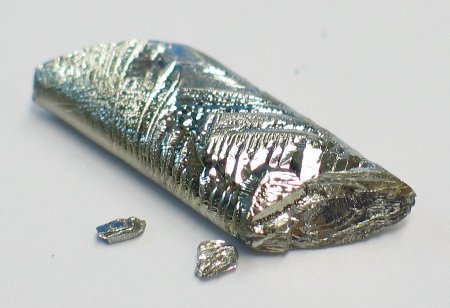A research team from various institutions including MIT has discovered the element tellurium in three ancient stars. The researchers have detected traces of this semiconducting element for the first time in stars that are approximately 12 billion years old.
 An image of an ultra pure tellurium crystal.
An image of an ultra pure tellurium crystal.
The discovery supports the ideas that tellurium originated from an unusual type of supernova at the time of nuclear fusion.
The research team reviewed the chemical composition of the three stars located in the circle of the Milky Way. The researchers examined data received from the spectrograph of the Hubble Space Telescope. Spectrograph separates star’s light into a spectrum of wavelengths. If a star contains a component, the atoms of that component take in starlight at distinct wavelengths and researchers can recognize this intake as dips.
The researchers discovered dips in the spectrum’s ultraviolet region and provided evidence that the rare element on the Earth exist in space. They also correlated tellurium with other heavy components such as strontium and barium.
Theoretical predictions reported that elements that are heavier than iron might have developed as part of the collapsing essence of a supernova. Nuclear physicists and astronomers have designed the r-process for 50 years to disclose the cosmic background of the elements. The research team identified that the ratios between heavy elements found in the three starts and those predicted by theoretical models matched with one another. Thus, the findings affirm the theory that heavier elements originated from a rapid supernova.
The research findings are published in Astrophysical Journal Letters.